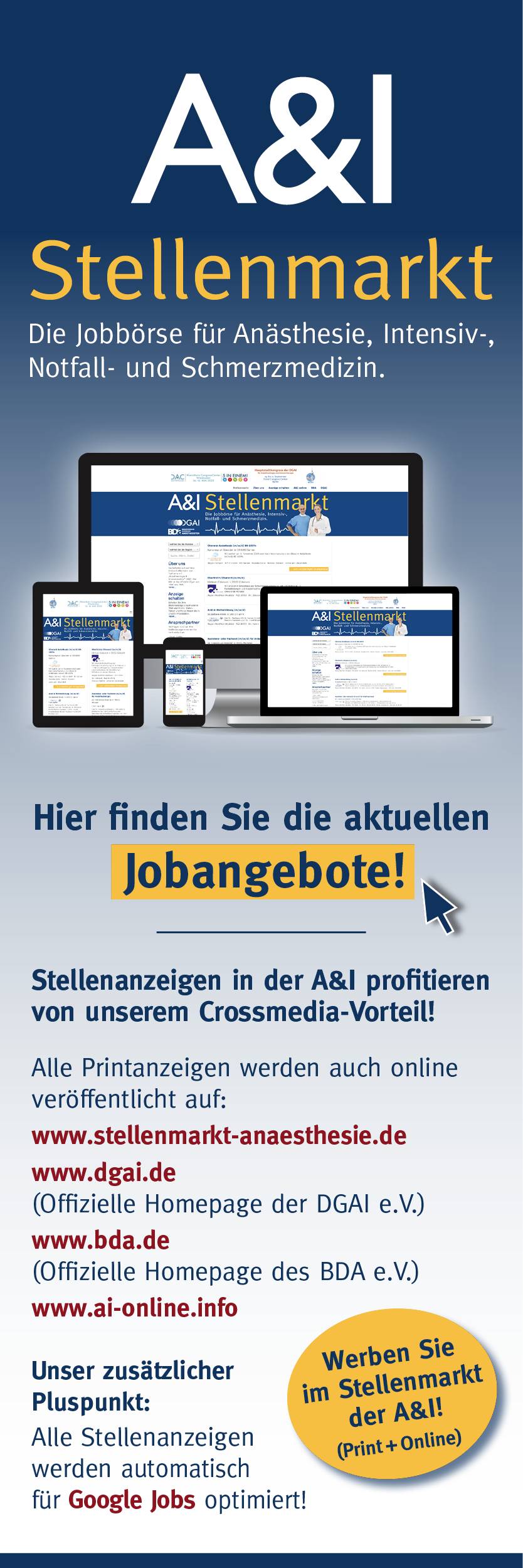
63. Jahrgang - Juli/August 2022
Das kindliche Polytrauma – neue Leitlinie
Paediatric polytrauma care – new guideline
Die S2k-Leitlinie „Polytraumaversorgung im Kindesalter“ fokussiert auf die spezifischen Besonderheiten und stellt eine Ergänzung der S3-Leitlinie „Polytrauma / Schwerverletzten-Behandlung“ dar. Zur Beurteilung kritisch verletzter Kinder eignen sich v. a. solche Parameter, die weitgehend unabhängig von altersentsprechenden Normalwerten, Kompensationsmechanismen und Stressoren sind: Atemarbeit, Rekapillarisierungszeit, Vigilanz, Gesamteindruck.
Bei der prähospitalen Versorgung polytraumatisierter Kinder steht die Stabilisierung der Vitalparameter im Vordergrund: Normotonie, Normoxie, Normokapnie, Normothermie und Analgesie. Da diese Ziele häufig auch mit einfachen Interventionen erreichbar sind, ist die Indikation zur invasiven prähospitalen Therapie (z. B. Notfallnarkose und invasive Beatmung) streng zu stellen. Die Schockraumversorgung folgt der gleichen Systematik wie bei Erwachsenen, allerdings steht bei der Diagnostik zunächst Ultraschall in Kombination mit klinischem Bild und Laborparametern im Vordergrund. Die Indikationsstellung zur Trauma-Spirale darf kein Automatismus sein, sondern erst nach Nutzen- / Risiko-Beurteilung erfolgen.
The S2k guideline “Paediatric Polytrauma Care” focuses on specific paediatric features and represents a supplement to the S3 guideline “Polytrauma / Treatment of Critically Injured Adults”. For the assessment of critically injured children, parameters will be particularly useful if they are largely independent of age, compensation mechanisms and stressors, such as breathing work, recapillarisation time, vigilance and the clinical impression.
During prehospital therapy, maintaining normotonia, normoxia, normocapnia, normothermia and analgesia is of utmost importance. These goals can often be reached by simple interventions, there must be a strict indication for invasive prehospital care (e. g., emergency anaesthesia and invasive ventilation). The emergency room treatment algorithm is similar to those used for adults, however, ultrasound in combination with clinical and laboratory parameters should be given priority. Trauma CT must not be applied routinely, instead, it should be indicated only after an individual risk-benefit evaluation.











